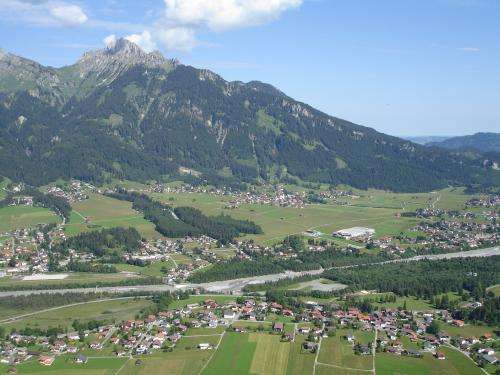In search of the big questions: Conserving the European Alps

In Douglas Adams' "Hitchhiker's Guide to the Galaxy", the world had to wait ten million years to learn the question to the ultimate answer. This might be justifiable for a question of such staggering importance but it would strain the patience of a scientist considering what research to undertake. In fact, one of the hardest things in science is asking the right questions, particular when the issue under debate is as broad as the conservation of biodiversity.
Scientists thinking of studying the preservation of the threatened ecological communities in the European Alps now have no excuse for addressing the "wrong" question: a paper published today in the prestigious online journal PLoS ONE gives the fifty "most important questions relating to the maintenance and restoration of an ecological continuum in the European Alps". The first and corresponding author is Chris Walzer of the Research Institute of Wildlife Ecology, Vetmeduni Vienna.
The European Alps range span eight countries from France to Slovenia and harbour an extraordinary diversity of habitats, plants and animals, including many species found nowhere else. They are widely considered to be one of the most important regions for the preservation of biodiversity in Europe. But the Alps are not just a natural paradise: they are the home and workplace of up to 14 million people and the destination for more than 100 million tourists each year. The resulting changes to the landscape have led to an increasing fragmentation of the plant and animal populations. Research is clearly needed to establish how can we stop or even reverse this trend but what precise issues should scientists address?
Together with fifteen colleagues from six European countries (Austria, France, Italy, Liechtenstein, Switzerland and the UK), Chris Walzer from the University of Veterinary Medicine, Vienna (Vetmeduni Vienna) now reports on a priority-setting exercise to identify the key questions relating to the conservation of biodiversity in the European Alps. The questions were selected during a workshop from nearly 500 initial questions submitted by scientists and administrators working at 48 institutions within the Alpine region.
The workshop did far more than merely list the questions that seemed most important: it also classified them according to context. Not surprisingly, the greatest proportion of questions (nearly half) related to nature, with almost as many relating to management, especially legislation, policy and planning needs. Only five of the questions related to people. Notably, more than half the questions touched on more than one of the three contexts, showing the importance of transdisciplinary work in addressing the key topics. The workshop produced a visual representation of the interconnections between the questions, which Walzer describes as a "visual "chaos," although he concedes that it does reflect the fragmented structure of society, governance and administration with respect to environmental problems.
The study aimed at producing a non-prioritized list but nevertheless a number of questions were found to depend on the results of others, making some degree of prioritization essential. For example, it is not possible to consider "which of the habitat types important for landscape connectivity are most affected by climate change?" without first understanding "which landscape elements and land use types enhance or moderate the gaps in connectivity?" and "which indicators reflect the changes in connectivity that result from climate or human induced changes in Alpine landscapes?" The participants recommended that questions such as "what is an effective set of indicators (for species and habitats) that can be used to evaluate and monitor connectivity at different scales?" be addressed with high priority, as it must be answered to enable three further questions to be tackled.
The ultimate choice of "most important questions" may be somewhat subjective and the authors regret that only one policy-maker participated in the workshop. A further difficulty was posed by the variety of languages spoken by the participants, which might have hampered the precise formulation of questions. Nevertheless, the final list of questions represents an important initial step in setting priorities for maintaining and restoring the biodiversity in the entire alpine region.
Walzer is highly encouraged by the results. As he says, "the overall procedure was rapid and cost-efficient but nevertheless it has given us a number of pointers on the requirements for future research. It is clear that many of the environmental problems in the Alps are 'wicked', if not 'super-wicked': they have no simple answers and cannot be solved by any single authority, so we tend to push them into the future although time is running out. However, thanks to this workshop we now at least have a clear picture of how to start tackling them."
More information: Walzer, C. et al., The 50 most Important Questions relating to the Maintenance and Restoration of an Ecological Continuum in the European Alps. PLoS ONE. dx.plos.org/10.1371/journal.pone.0053139
Journal information: PLoS ONE
Provided by University of Veterinary Medicine -- Vienna


















